Lhundrub County is located north of Lhasa including the valley of Lha-chu or Phenpo Chu. The county capital is Phodo Dzong, about 148km from Lhasa. There are so many monasteries in Lhundrub county. Some of the most attractive destinations are Nalanda monastery, Shara Bumpa, Taklung monastery, and Reting monastery.
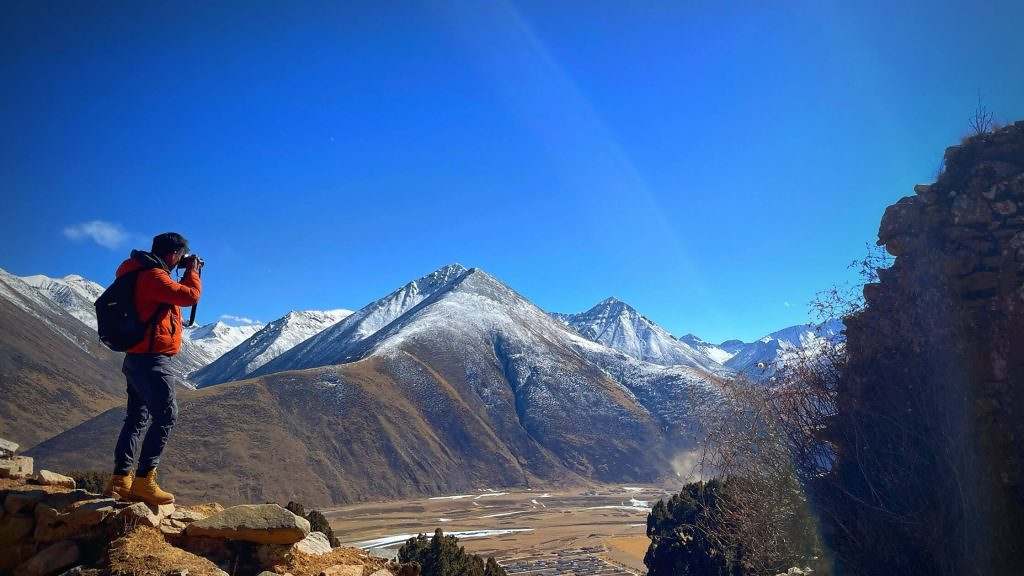
Nalanda monastery was founded in 1435 by the renowned scholar Rongton Chenpo Mewei Senge and later converted to Sakyapa monastery. He was recognized as one of the six jewels of Tibet.
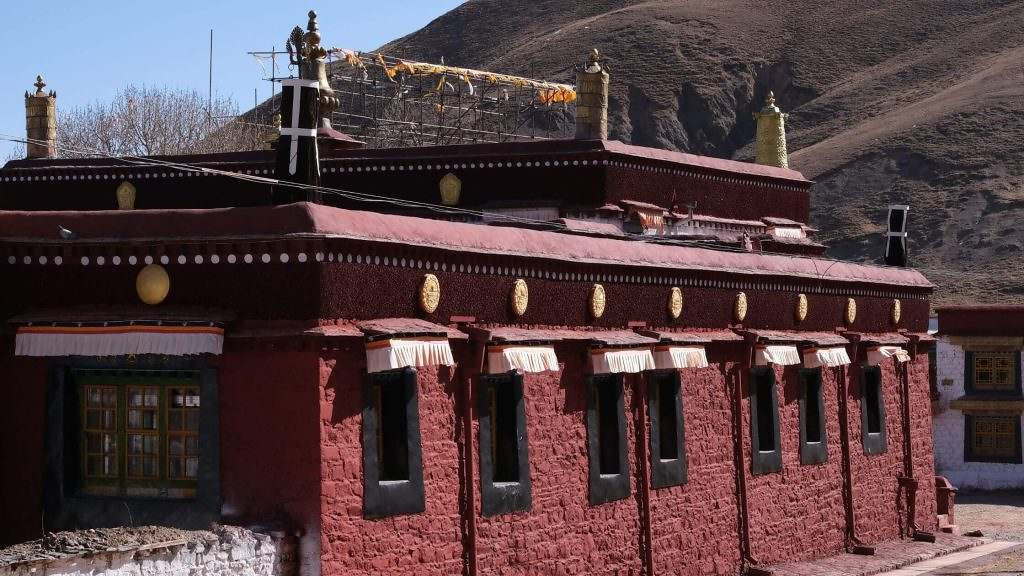
The ruins at Nalanda are extensive but there is renovated assembly hall, including an image of Rongton Chenpo and a stone bearing his footprint. There are also two stored residential buildings and a large Kadam stupa. The hermitages and college have been re-established by Khenpo Tsultrim of Lhasa Men-Tsi-Khang.
The monastery is located 12km from the county capital. There are around 50 monks at the monastery.
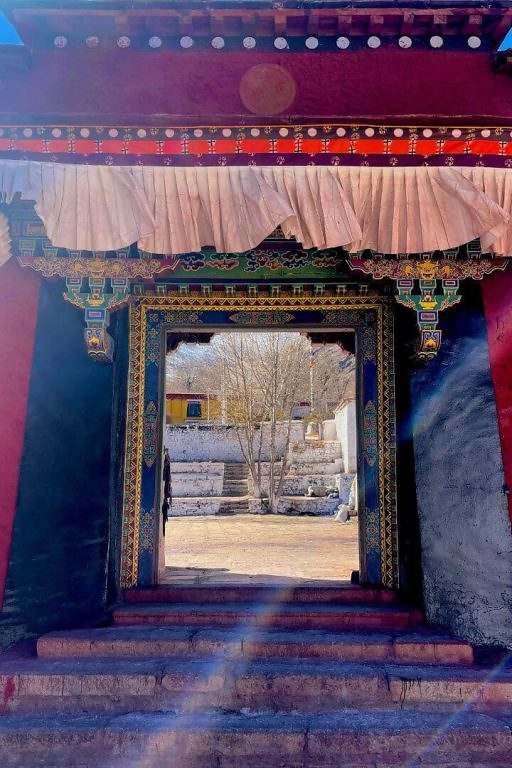
The large Kadam stupa known as Shara Bumpa has located west of Kusha village on the road to Langma and the Chak la pass. It was constructed by Sharapa Yonten Drak and it is revered by pilgrims who believed that by circumambulating it blindness can be cured.
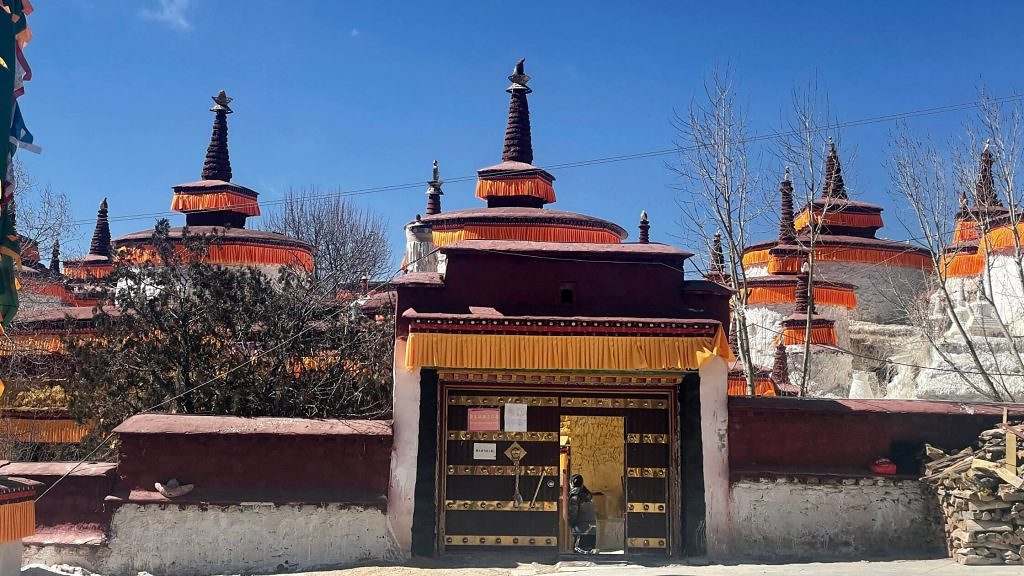
There are around 216 stupas, 108 huge stupas, and 108 small stupas. Most of those stupas are reliquary stupas of some of the most revered scholars of the Kadampa School of Tibetan Buddhism. There is a small nunnery next to the Shara Bumpa.
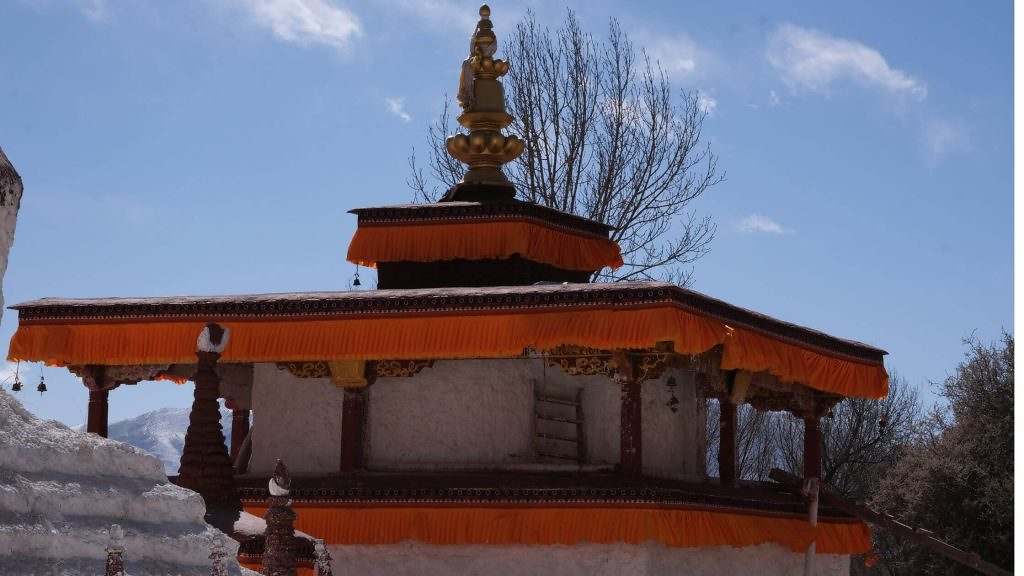
The road follows the Reting Tsangpo upstream for 47 kilometers through the beautiful Miggi valley to arrive at Reting, located at 4,100 meters, amidst remarkable juniper wood on the lower slopes of Mount Gangi Rarwa. The monastery was constructed in 1056 by Dromtonpa, the foremost Tibetan student of the great Bengali Buddhist master Atisha, two years after the latter had passed away at Nyetang, south of Lhasa.

Here it was that Dromtonpa established the principal seat of his Kadampa school, and, according to legend, 20,000 juniper trees and springs emerged from the hairs of his head. His successors Neljorpa Chenpo and Potowa expanded the monastery following Dromtonpa’s death in 1064, but the Mongol armies of Dorta pillaged the site in 1240. Later, in the 14th century, Tsongkhapa visited Reting and experienced a vision of Atisha, on the basis of which he composed his celebrated Great Treatise on the Graduated Path to Enlightenment (Lamrim Chenmo). From the time of Dalai Lama VII, the abbots of Reting became eligible to serve as regent of Tibet, and they in fact did so from 1845-55, and 1933-47.
Amid the ruins of Reting, which was badly damaged in the 1960s, it is hard to grasp the former splendor of the buildings. To the extreme west of the hillside there once stood the five-storeyed Reting Labrang, the palace of Reting Rinpoche, flanked by stupas.
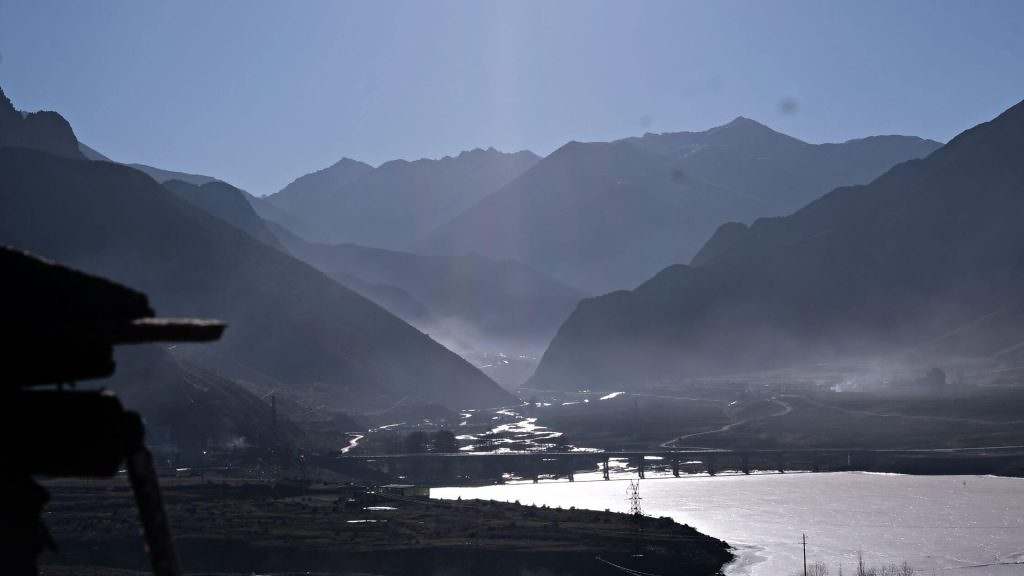
In the center, stood the Assembly Hall (Dukhang), or Chokhang Chenmo, containing a highly revered solid gold image of the meditational deity Guhyasamaja in the form of Manjuvajra, 45 centimeters in height, which was the principal meditative object of Atisha, said to have been naturally formed from the union of the primordial buddha Vairadhara and his consort. The hall also once contained a ‘speaking image’ of Tara and a stupa known as Tashi Pelbar. Only part of this magnificent building has been reconstructed in recent years, and the image of Manjuvarja is still the most venerated object of offering.
To the left of the building, is a consecrated spring; and to its right, there was formerly the residence of Dromton and a chamber containing his teaching throne. Immediately above the Assembly Hall was the residence of Tsongkhapa, where the aforementioned Lamrim Chemo was composed, and where a lifelike (Ngadrama) image of Atisha was formerly housed. The residence of Tsongkhapa’s teacher Remdawa was situated higher still. On the upper east slopes of the hillside, there was a nunnery known as Samtenling.
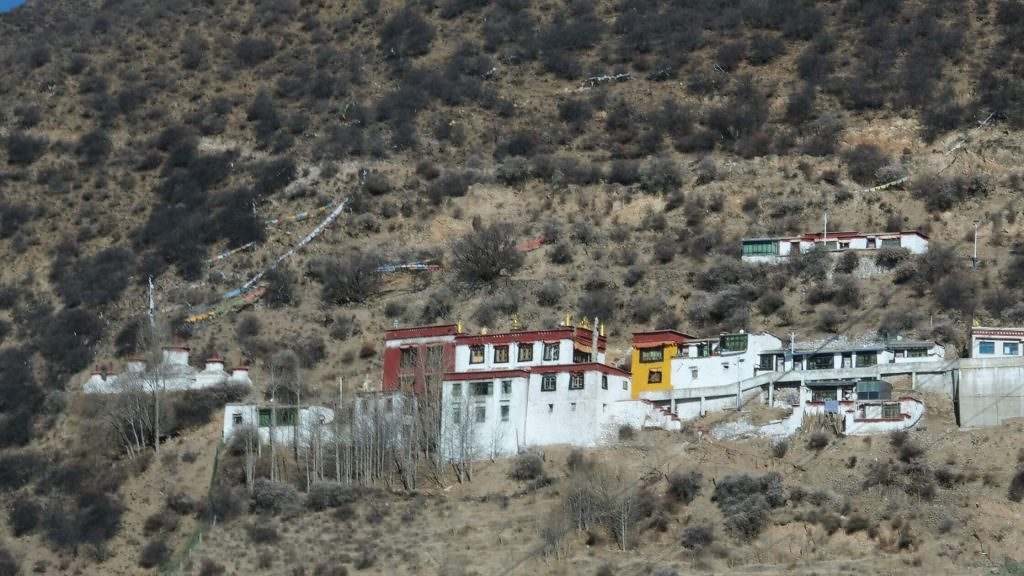
Dromtonpa’s meditation cave is located in a restored chapel on the hilltop Drak Senge ridge, adjacent to a shrine dedicated to the local deity Garwa Nagpa. Outside the cave are a sacred spring, the life-supporting tree of Dromtonpa, and a willow tree embodying Mahakala.
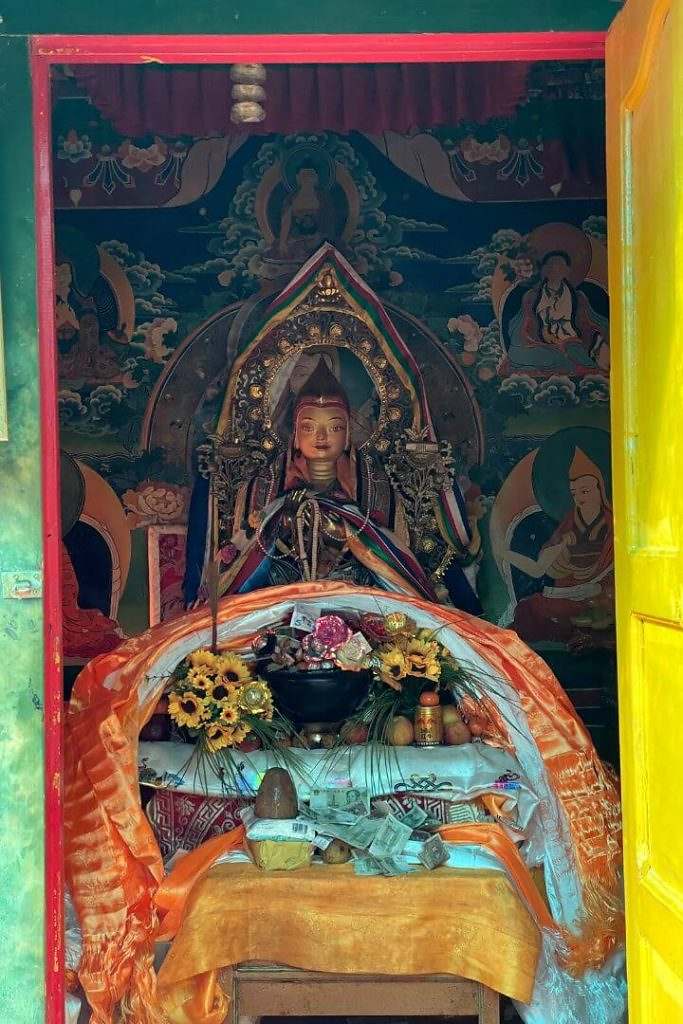
Other hermitages located on the ridge contain the remains of Dromtonpa’s stone seat, from which Tsongkhapa later delivered his Foundation of All Excellence; while adjacent stone thrones have been adorned with images of Atisha, Dromtonpa and Maitreya. A red-painted rock on the same ridge indicates the residence of Chingkawa, the protective divinity of Reting, which Atisha himself has brought from Nalanda in India.
Below the monastery, in the ‘plain of boulders’ (Pawang Tang), there is a large rock, known as Khandro Bumdzong, which is revered as the abode of the female deity Sangwa Yeshe.
